Sterigmatospora Q.M. Wang & F.Y. Bai gen. nov.
Index Fungorum number: MB 828810; Facesoffungi number: FoF
Etymology: the genus is named based on the morphology of the vegetative cells, which produce conidia on stalk-like conidiophores.
This genus is proposed for the branch represented by strain CGMCC 2.5817, which formed a separate clade. Member of the Jianyuniaceae (Agaricostilbales). The genus is mainly circum- scribed by the phylogenetic analysis of the seven genes dataset, in which it occurred as a separate branch within Jianyuniaceae (Fig. 4A).
Sexual reproduction not known. Colonies cream, butyrous. Budding cells present and blastoconidia produced on stalk-like conidiophores. Conidiophore single or multiple, usually cluster on cells. Pseudohyphae and hyphae not produced. Ballistoco- nidia not formed.
Type species: Sterigmatospora layueensis Q.M. Wang, F.Y. Bai & A.H. Li.
Note: – Sterigmatospora and Pseudosterigmatospora can produce stalk-like conidiophores, the former usually produces cluster of conidiophores from one site on cells, the latter can form bifurcate or trifurcate conidophores. They are also distinguished by some
physiological characteristics (Table S1.21), such as assimilation of raffinose and growth in vitamin-free medium.
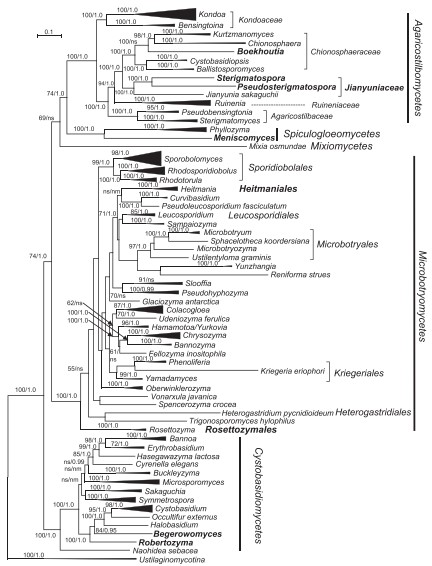
Fig. 4. Phylogenetic tree inferred using the combined sequences of RPB1, RPB2, TEF1, CYTB, SSU rDNA, LSU rDNA D1/D2 domains and 5.8S rDNA, depicting the phylogenetic positions of new taxa (in bold) within Pucciniomycotina. The tree backbone was constructed using maximum likelihood analysis. Bootstrap percentages of maximum likelihood analysis over 50 % from 1 000 bootstrap replicates and posterior probabilities of Bayesian inference above 0.9 are shown respectively from left to right on the deep and major branches. Bar = 0.2 substitutions per nucleotide position. Note: ns, not supported (BP < 50 % or PP < 0.9); nm, not monophyletic. The new taxa are in bold.
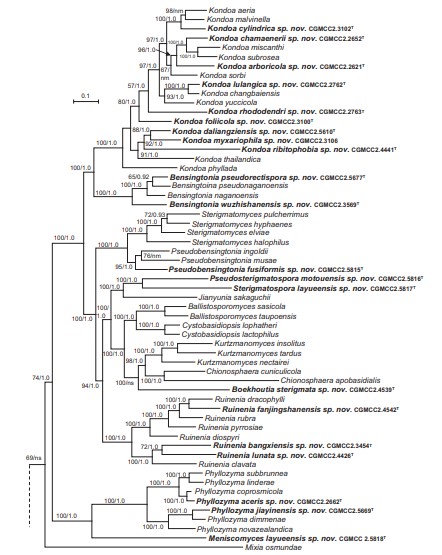
Fig. 4. (Continued).
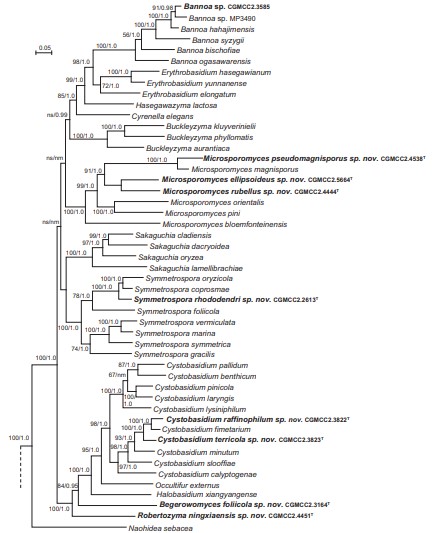
Fig. 4. (Continued).
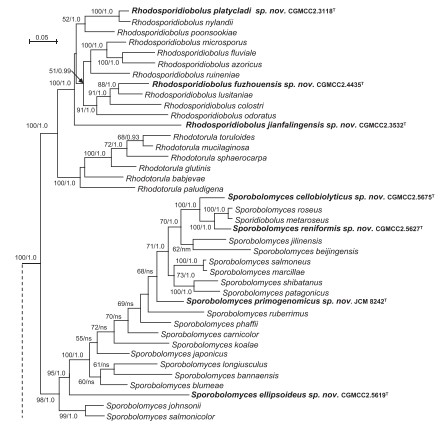
Fig. 4. (Continued).
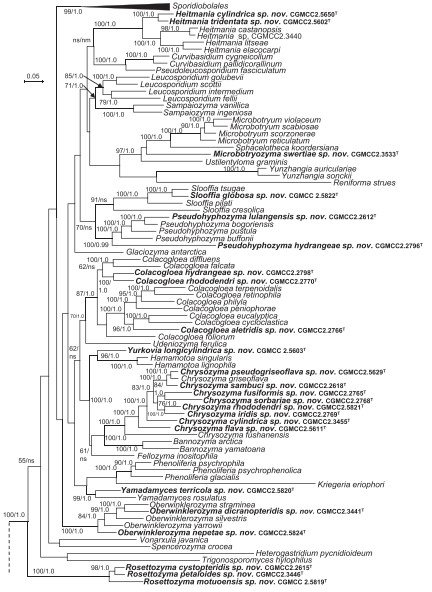
Fig. 4. (Continued).
Species
